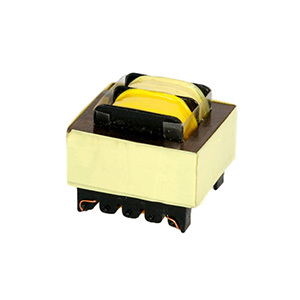NEWS
Understanding How Switching Power Supply Transformers Work: An In-Depth Exploration
Release time:
Nov 20,2024
Understanding How Switching Power Supply Transformers Work
Table of Contents
- 1. Introduction to Switching Power Supply Transformers
- 2. What is a Switching Power Supply Transformer?
- 3. How Switching Power Supply Transformers Work
- 4. Key Components of Switching Power Supply Transformers
- 5. Applications of Switching Power Supply Transformers
- 6. Advantages of Using Switching Power Supply Transformers
- 7. Challenges and Limitations of Switching Power Supply Transformers
- 8. Future Trends in Switching Power Supply Transformer Technology
- 9. Conclusion
- 10. FAQs about Switching Power Supply Transformers
1. Introduction to Switching Power Supply Transformers
In the realm of electronic device design, **switching power supply transformers** play a pivotal role in energy conversion and management. These transformers differ significantly from traditional linear transformers, primarily in their efficiency and size. As technology progresses, understanding how these components function becomes crucial for engineers and enthusiasts alike. This article delves into the inner workings, advantages, applications, and future trends of switching power supply transformers.
2. What is a Switching Power Supply Transformer?
A **switching power supply transformer** is a critical component in power supply units that facilitate the conversion of electrical energy from one voltage level to another. Unlike linear power supplies, which use a transformer and voltage regulator, switching supplies utilize high-frequency switching to improve efficiency and reduce size. These transformers are designed to operate at higher frequencies, typically ranging from 20 kHz to several hundred kHz, which allows for a compact design and lighter weight.
Key characteristics of switching power supply transformers include:
- **High Efficiency**: Due to minimal energy loss during conversion.
- **Compact Size**: Smaller than traditional transformers, making them ideal for space-constrained applications.
- **Versatile Voltage Output**: Can provide various output voltage levels to meet different device requirements.
3. How Switching Power Supply Transformers Work
Switching power supply transformers operate based on the principle of electromagnetic induction, similar to traditional transformers. However, the process involves several distinct steps that differentiate them from linear transformers:
The Basic Operation Principle
The basic operation of a switching power supply transformer involves three main stages:
1. **Input Voltage Conversion**: The process begins when an AC input voltage is rectified into DC voltage. This DC voltage is then switched on and off rapidly using a transistor or similar switching device.
2. **Magnetic Coupling**: The high-frequency signal generated by the switching device is fed into the primary winding of the transformer, creating a magnetic field. This magnetic field induces a current in the secondary winding through electromagnetic induction.
3. **Output Voltage Regulation**: The induced voltage in the secondary winding can be stepped up or down depending on the turns ratio of the transformer. The output voltage is then filtered and regulated to provide a stable DC output for electronic devices.
Control Mechanisms
To ensure that the output voltage remains consistent despite variations in load, switching power supply transformers employ control mechanisms such as:
- **Feedback Loops**: These loops monitor the output voltage and adjust the duty cycle of the switching device to maintain the desired voltage level.
- **PWM (Pulse Width Modulation)**: This technique modulates the width of the pulses sent to the transformer, allowing for precise control over the output voltage.
4. Key Components of Switching Power Supply Transformers
Understanding the individual components that make up switching power supply transformers is essential for grasping their operation:
Transformer Core
The core of the transformer is typically made from ferrite or laminated silicon steel. It is designed to minimize energy losses due to eddy currents and provide efficient magnetic coupling.
Windings
The windings consist of the primary and secondary coils, which determine the voltage transformation ratio. The wire used in the windings is usually enameled copper or aluminum to ensure good conductivity.
Switching Devices
Transistors, such as MOSFETs or IGBTs, are used as switching devices that rapidly turn the current on and off, allowing for efficient energy conversion.
Diodes and Filters
Rectifier diodes convert the AC output from the transformer back to DC, while filters smooth out the voltage to eliminate ripples and provide a stable output.
5. Applications of Switching Power Supply Transformers
Switching power supply transformers find applications across various industries due to their versatility and efficiency. Some common applications include:
Consumer Electronics
In devices such as laptops, smartphones, and televisions, switching power supply transformers are essential for providing regulated power.
Industrial Equipment
These transformers are integral to industrial machinery, automation systems, and robotics, where reliable power is critical.
Telecommunications
In telecommunications, switching power supply transformers support data transmission systems, ensuring uninterrupted service.
Medical Devices
In medical equipment, precision and reliability are paramount, making switching power supply transformers a preferred choice for devices like MRI machines and patient monitors.
6. Advantages of Using Switching Power Supply Transformers
Switching power supply transformers offer numerous advantages over traditional linear transformers:
High Efficiency
They operate with significantly higher efficiency, often exceeding 90%, reducing energy waste and heat generation.
Compact Design
The smaller physical footprint of switching transformers allows for more design flexibility in electronics, especially in portable devices.
Wide Input Voltage Range
Switching transformers can accommodate a broad input voltage range, making them suitable for global applications.
Cost-Effectiveness
Despite a slightly higher initial cost, the overall savings in energy consumption and space often make switching transformers a more economical choice in the long run.
7. Challenges and Limitations of Switching Power Supply Transformers
While switching power supply transformers offer many benefits, they are not without challenges:
Electromagnetic Interference (EMI)
The high-frequency switching can generate EMI, which may interfere with other electronic devices if not properly mitigated.
Complex Design
The design of switching power supplies can be more complex than linear power supplies, requiring a higher level of expertise to manufacture and maintain.
Thermal Management
Although they generate less heat than linear transformers, effective thermal management is still essential to prevent overheating during operation.
8. Future Trends in Switching Power Supply Transformer Technology
As technology advances, several trends are emerging in the field of switching power supply transformers:
Integration with Digital Controls
The integration of digital control systems allows for more precise regulation of output voltage and improved efficiency.
Miniaturization
Efforts toward smaller and lighter transformers continue, driven by consumer demand for portable and compact electronic devices.
Use of Advanced Materials
Research into advanced magnetic materials is underway, promising to enhance efficiency and reduce losses in transformers further.
Smart Power Management
The development of smart power management systems will enable real-time monitoring and optimization of power supplies, leading to more sustainable energy use.
9. Conclusion
Understanding how switching power supply transformers work is essential for anyone involved in electronics, from professionals to hobbyists. Their unique design and operation principles offer significant advantages in efficiency, size, and versatility, making them a preferred choice in many applications. As technology evolves, the future of switching power supply transformers looks promising, with innovations that aim to enhance their performance and applications even further. By staying informed about these developments, we can better utilize these vital components in our ever-evolving technological landscape.
10. FAQs about Switching Power Supply Transformers
1. What is the main difference between switching and linear power supply transformers?
The primary difference lies in their operation: switching transformers operate at high frequencies, which allows for greater efficiency and a smaller size compared to linear transformers, which use a larger physical design and operate at lower frequencies.
2. Are switching power supply transformers safe for all applications?
Yes, when designed and manufactured to meet regulatory standards, switching power supply transformers are safe for a wide range of applications, including consumer electronics and medical devices.
3. How do I choose a switching power supply transformer for my project?
Consider factors such as input voltage, output voltage requirements, efficiency, size constraints, and application-specific needs when selecting a switching power supply transformer.
4. Can switching power supply transformers be repaired?
While some components may be replaceable, it is often more cost-effective to replace the entire transformer rather than attempt repairs due to the complexity and precision required.
5. What are common materials used in the construction of switching power supply transformers?
Common materials include ferrite cores for the transformer, enameled copper or aluminum wire for the windings, and various semiconductor materials for the switching devices.
Previous


















